
Today we will be breaking down a big American red snapper I had brought up from the Gulf of Mexico. This fish weighs about 16 pounds gutted, so bit bigger than the average you will run into. But big or small the process of breaking the snapper down is about the same. I will start off and say we will be eating this fish with the skin still on the fillets. If you want to cook the red snapper with the skin off or want to do a red snapper on the half-shell recipe, you can just skip over the scaling steps of breaking the red snapper down. Just make sure to clean off the scales from the skinless fillets before serving, getting a scale in the mouth when you take a bite of fish isn’t pleasant.
With prepping the red snapper first thing we like to do is trim off the dorsal fins with a set of heavy kitchen shears, the fin spines are really sharp and hurt like hell when you accidentally run your hand into them. Better to clip them off now before scaling the fish to make sure you don’t get pricked later.
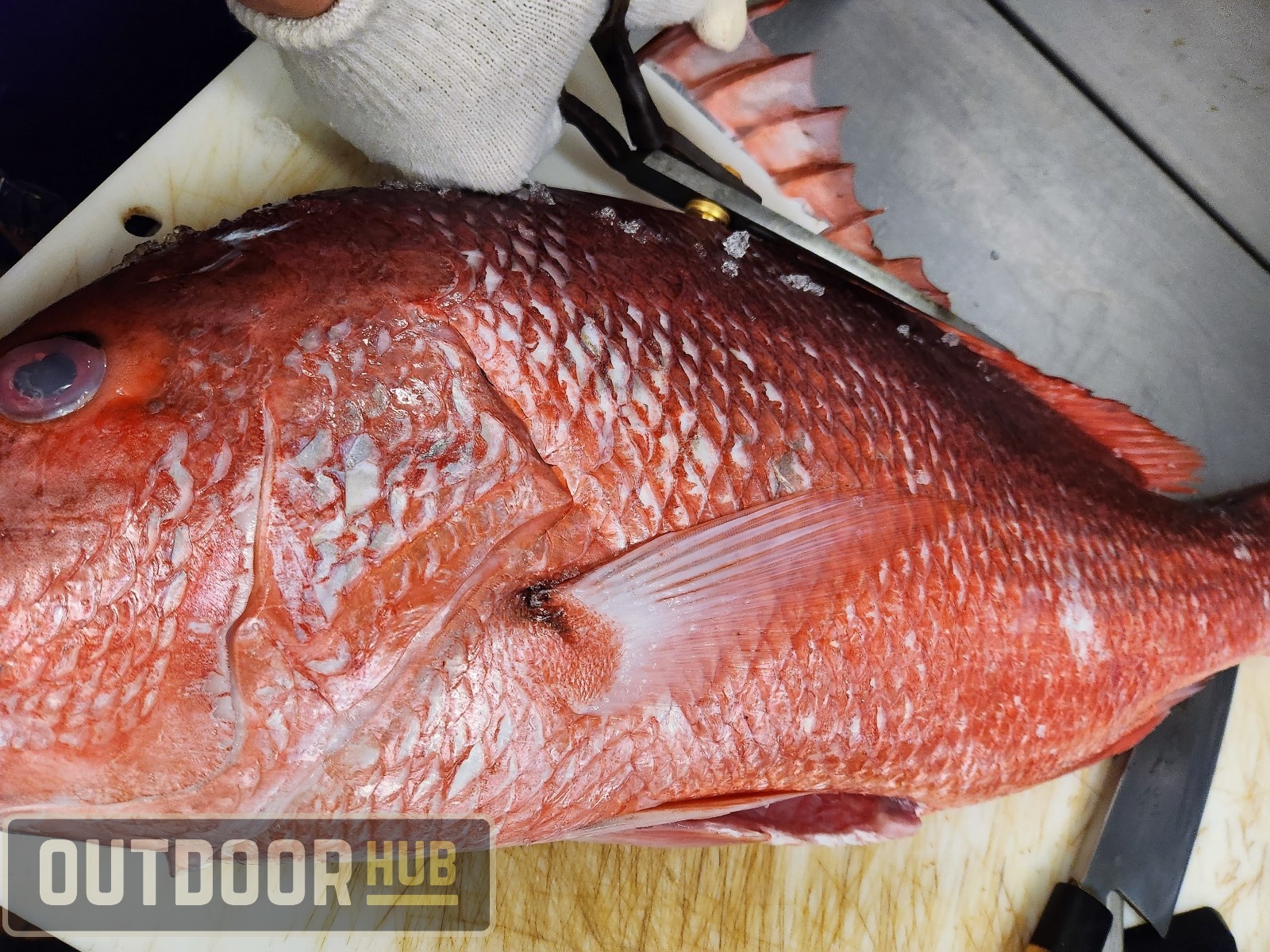
Once the dorsal fin is trimmed off we take the fish into a deep sink to start scaling it. If you don’t have a sink like this at home I recommend completing this step outside or at the dock. The scales are going to fly everywhere if you do this in your kitchen sink, but if you have to have the water running over the fish while you scale to help keep the scales from flying out as far.

Once the red snapper has been scaled, the next step is to take the head and collars off the fish. You want to cut at an angle up from below the pelvic fins to the back of the head. Once you cut both sides like that you can bend the head back to pop the spine and take the head off. While some people fillet fish with their heads and collars still attached we like to remove them because the fish will lay flatter without the head.
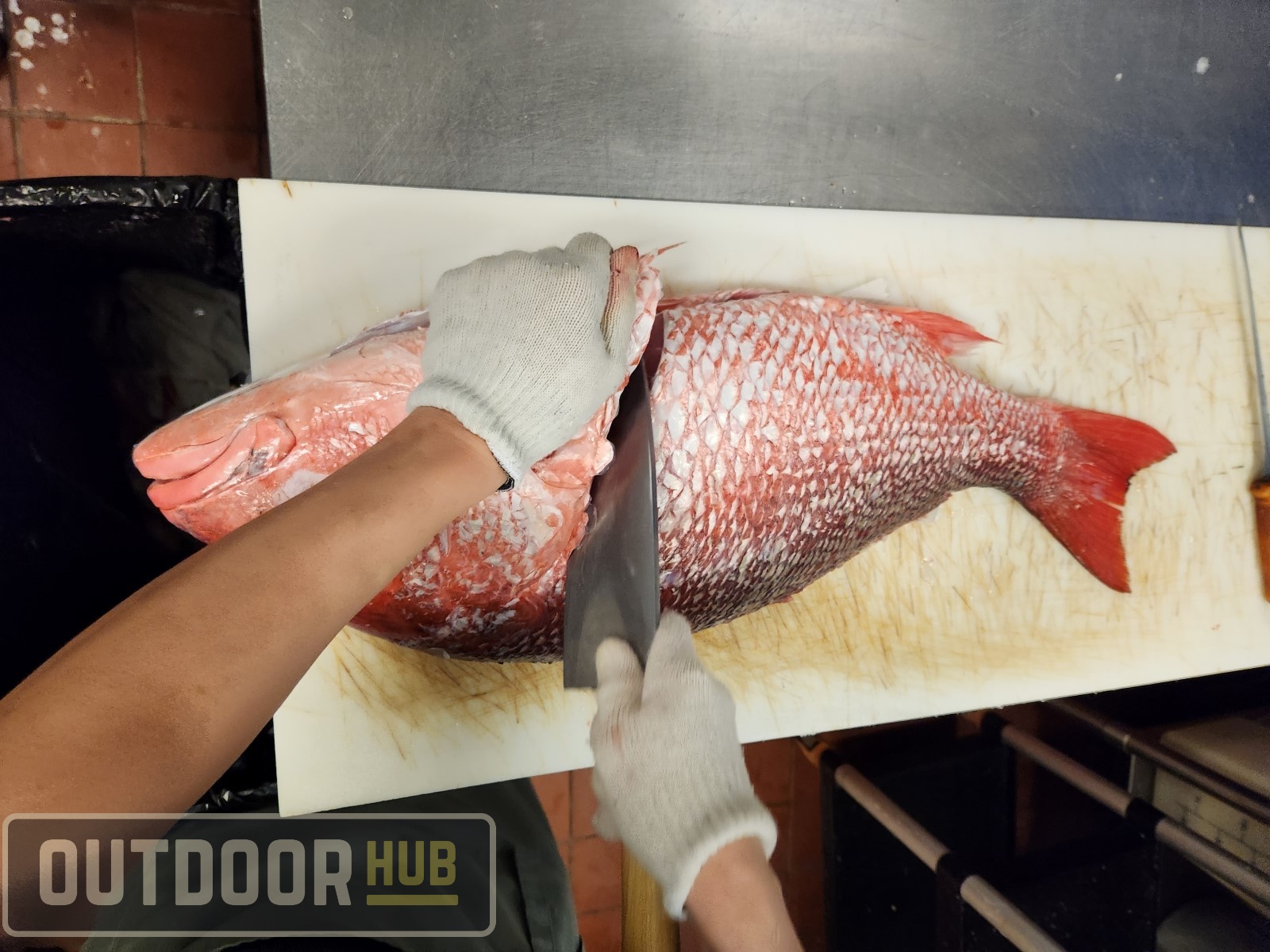
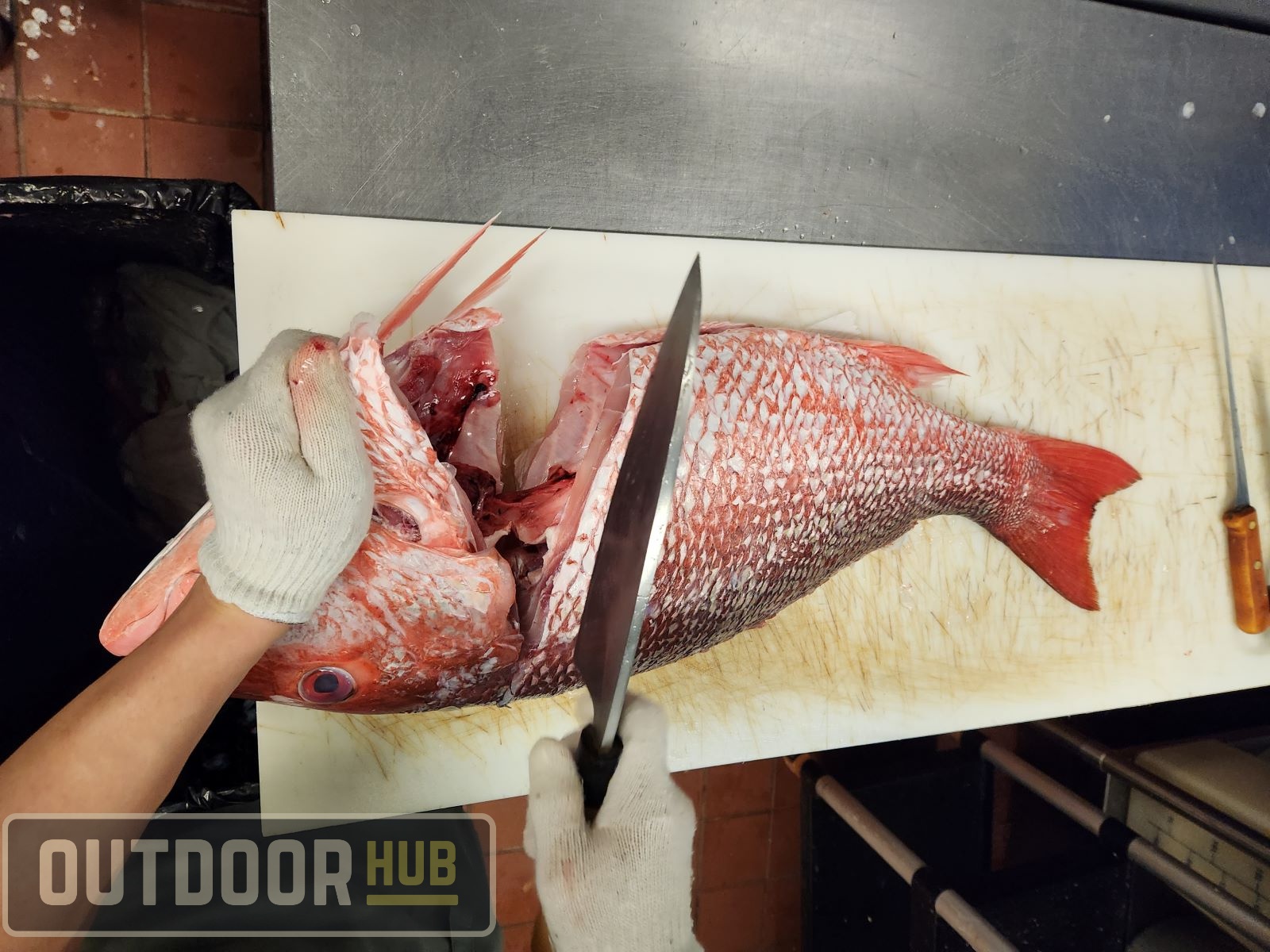
Make sure to keep the collars/throats of the fish, they’re great fried, smoked, or grilled. The head can be saved and turned into soup or stock, lots of good collagen in these big snapper heads.
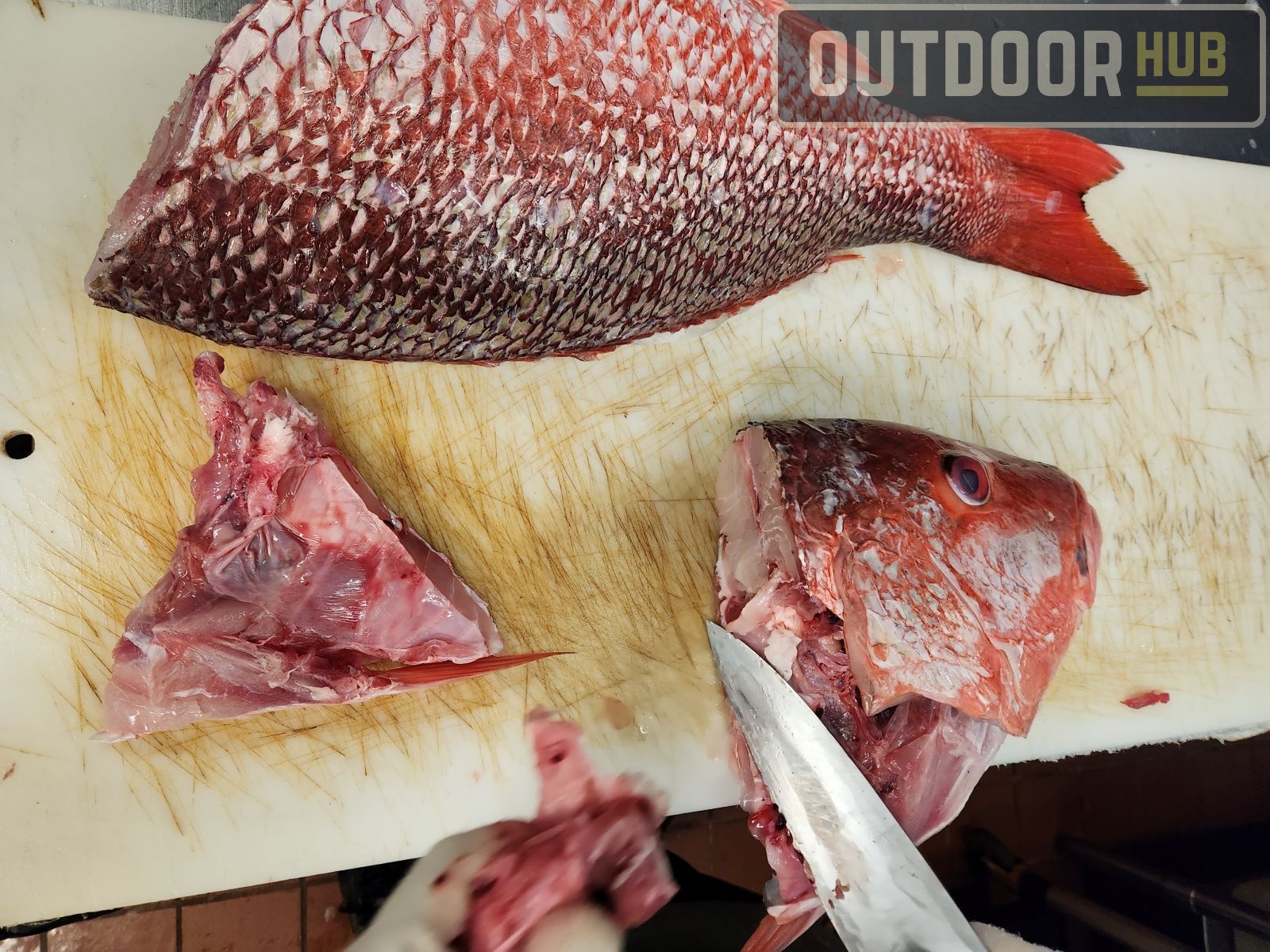
Now the head and scales are gone you can start taking the fillets off the frame. Using a sharp knife make the first cut along the back of the fish, making sure to keep the angle of the knife angle slightly down.
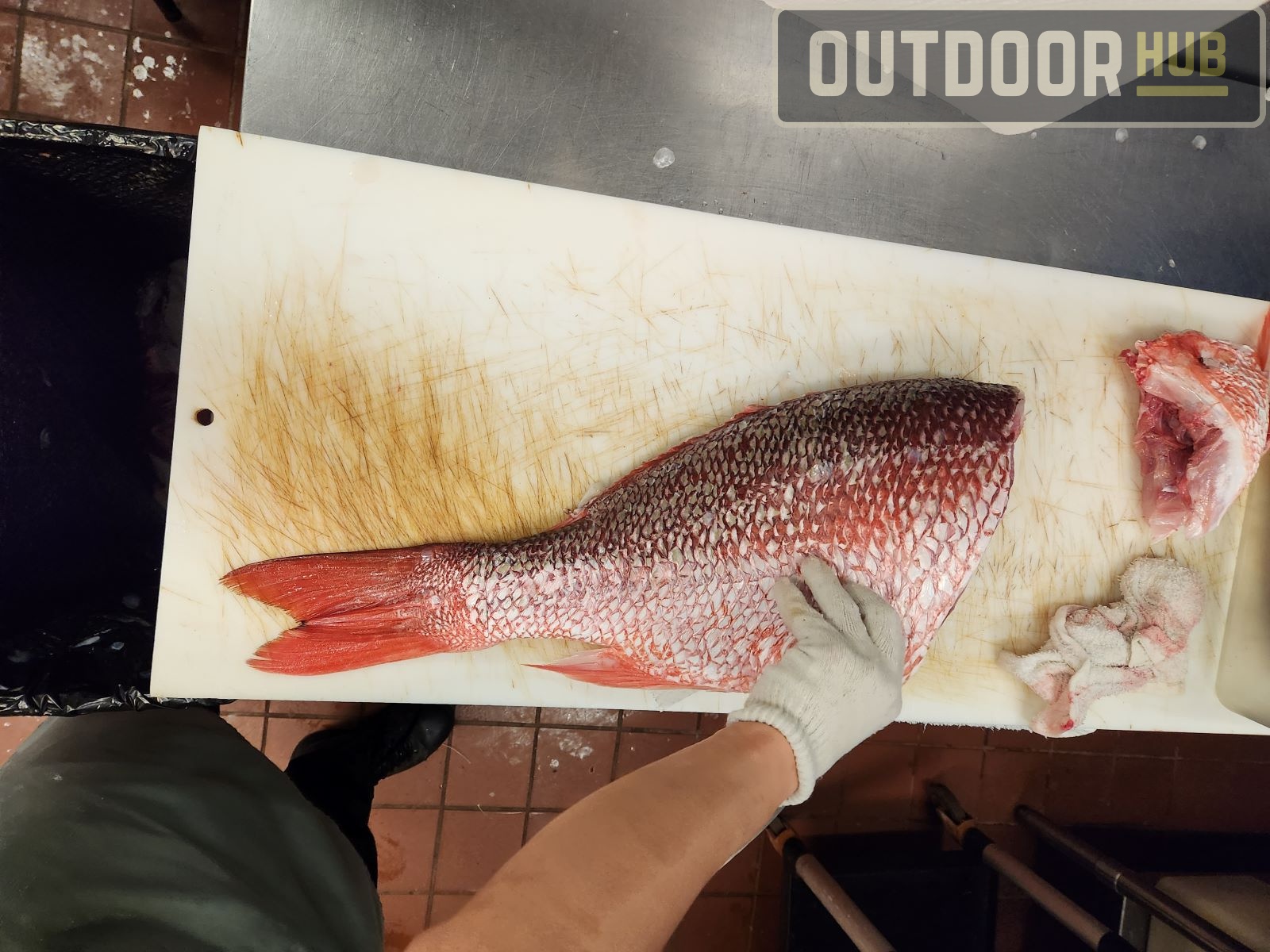
First, start with a cut at the tail to have an endpoint for your fillet, then you want to ride the bones of the fish without accidentally cutting through the backbones and into the opposite fillet.
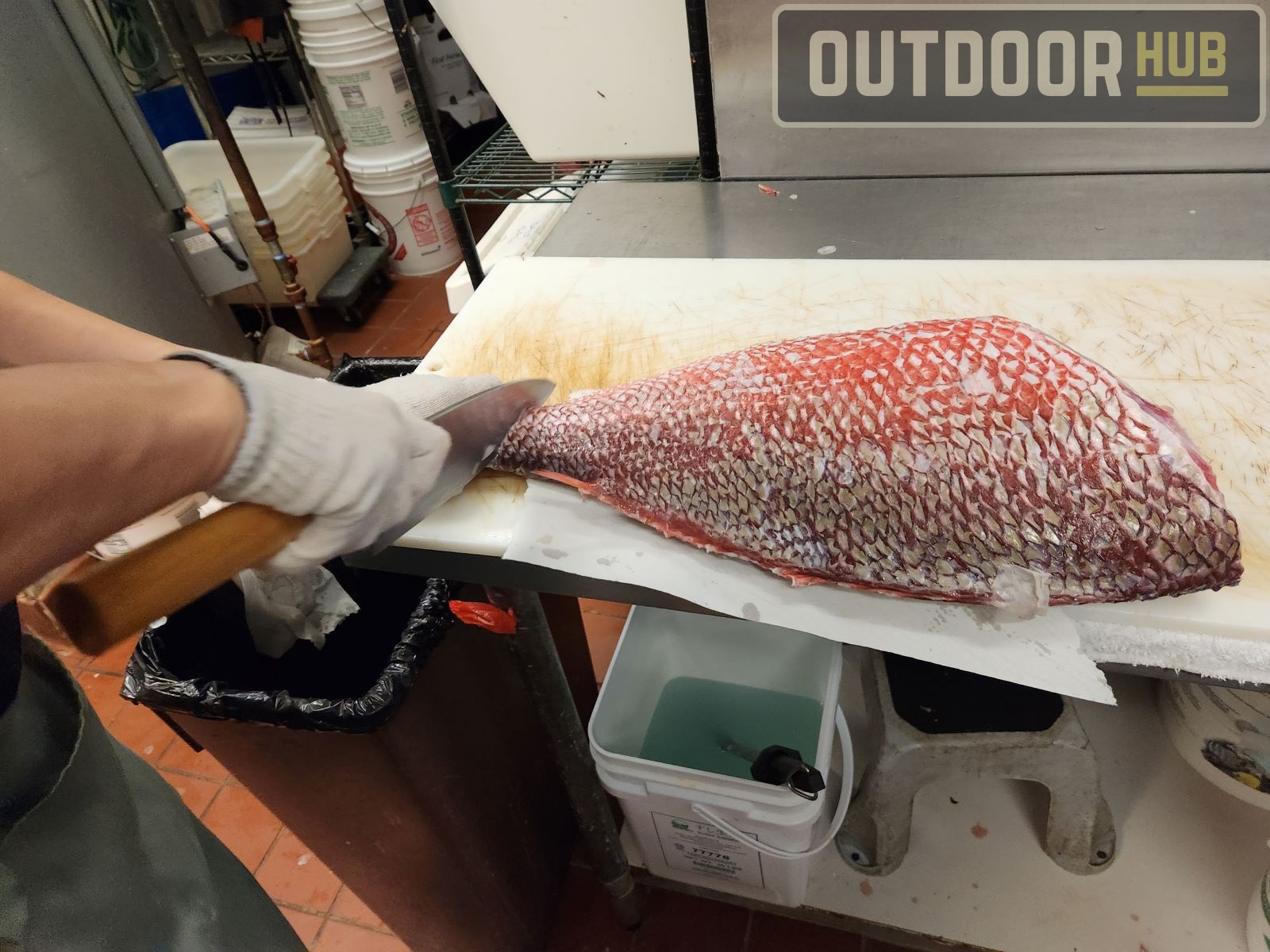

As you make your cuts along the backbone gently lift up the fillet off the bones to make sure you don’t accidentally cut the fillet.

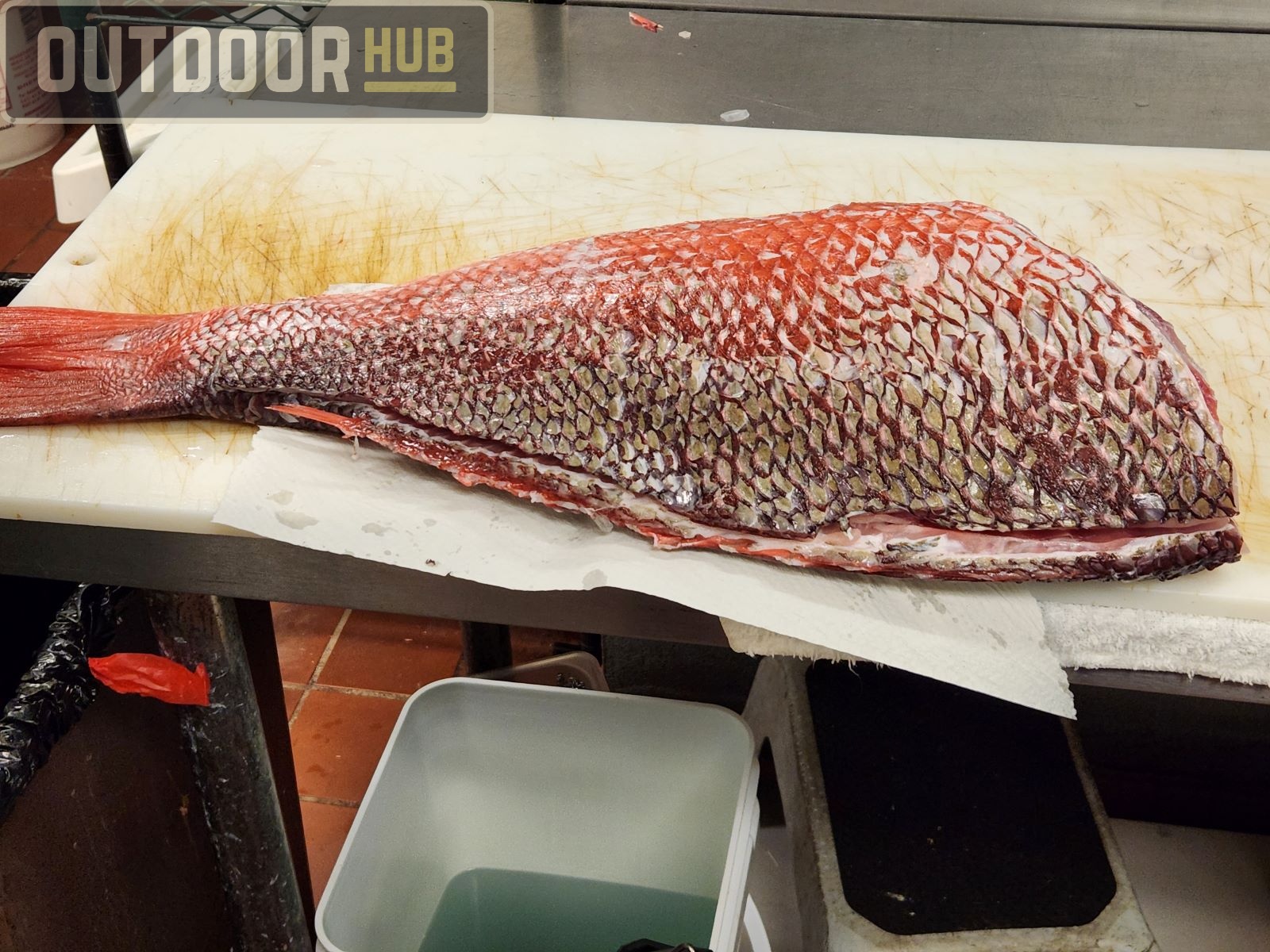
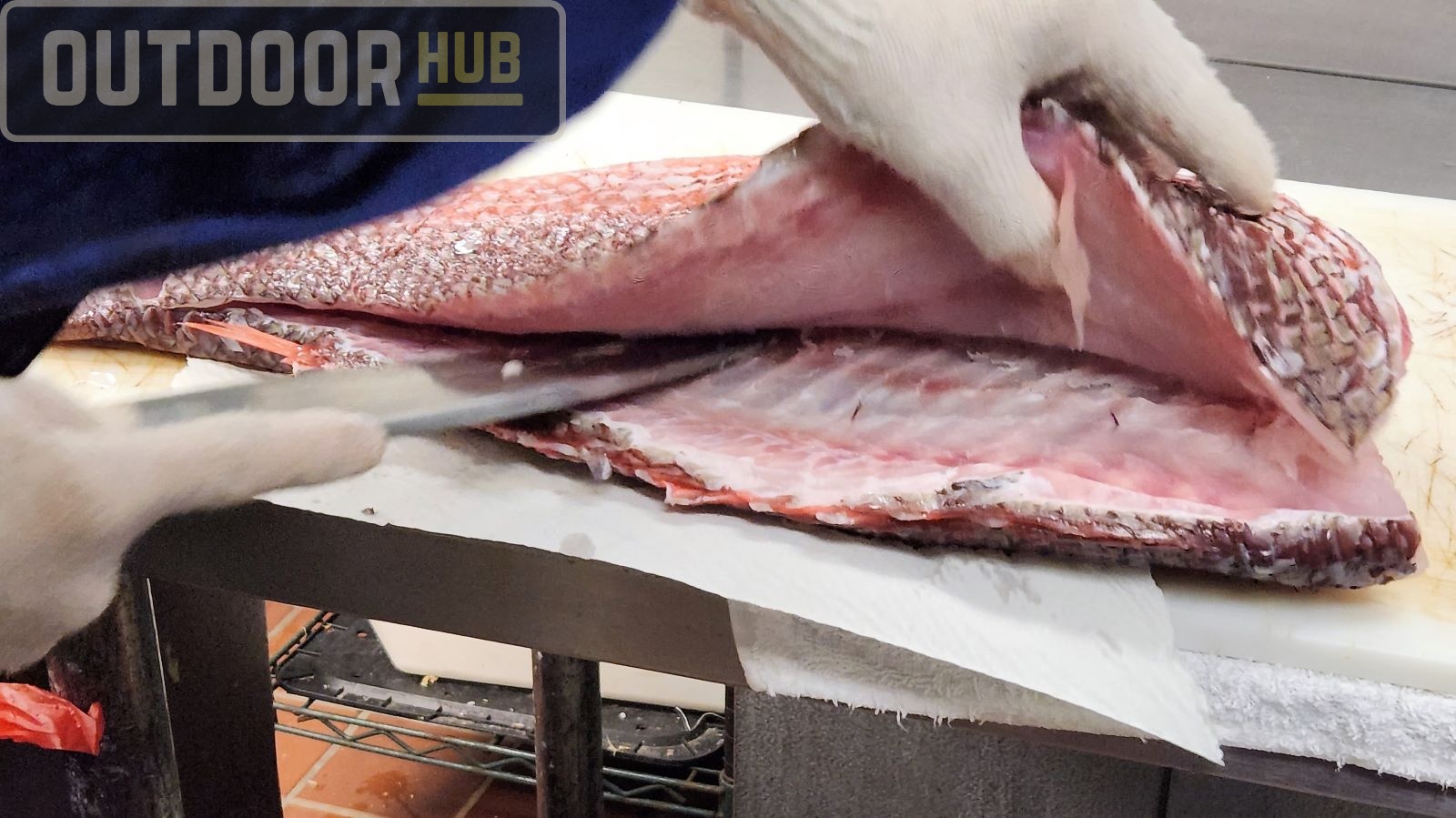

When you reach the rib bones I just like forcing the knife through them and then trim them out at a later step. You can choose to cut around the ribs and leave them attached to the frame to, it’s a personal preference thing.
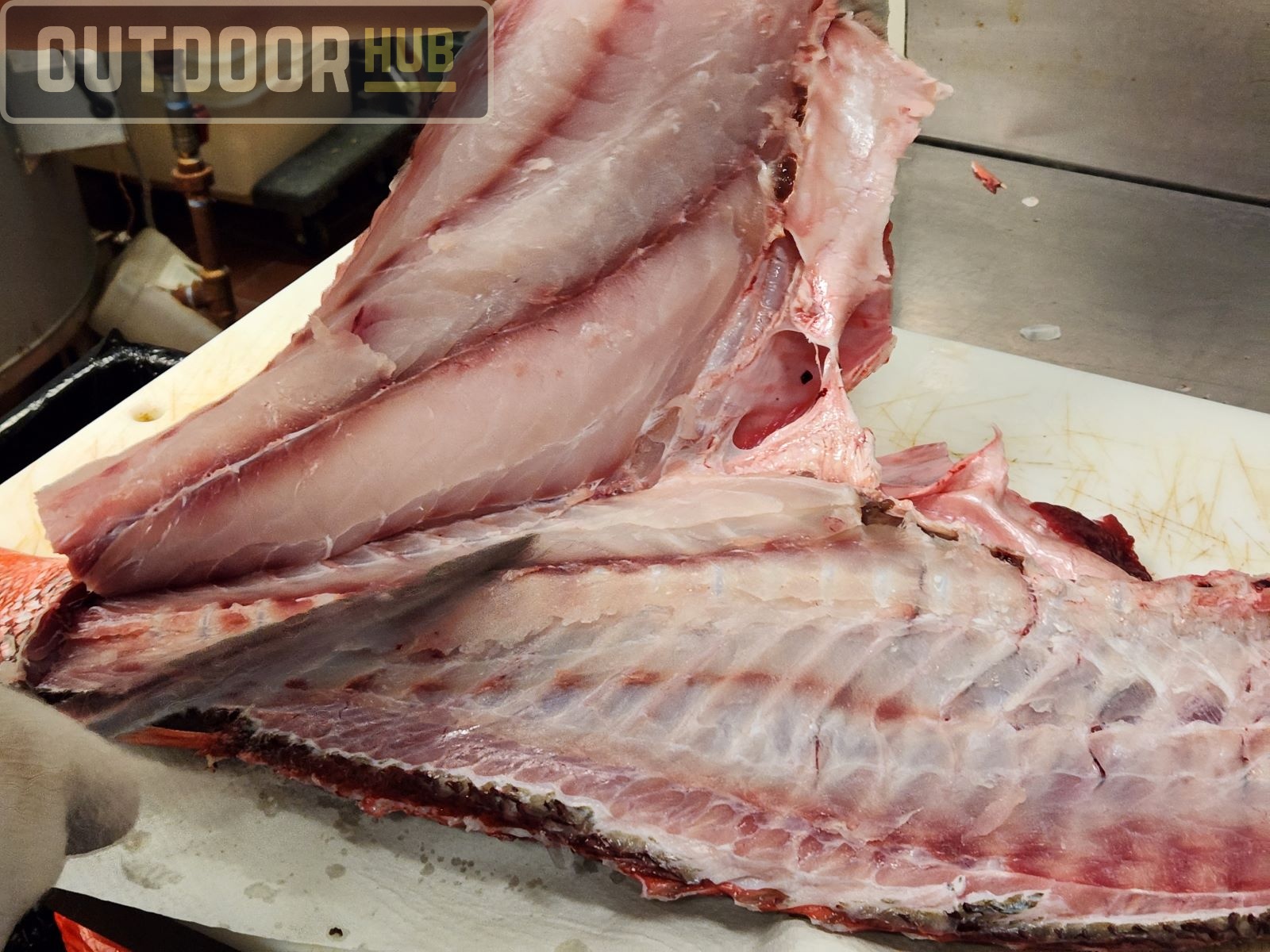

Avoid sawing motions when trying to take the fillets off the frame, they tear the meat instead of giving you nice fillets. Repeat for the second side of the fish. You can see in the pictures now with the head taken off the side that’s already been filleted lays nice and flat.
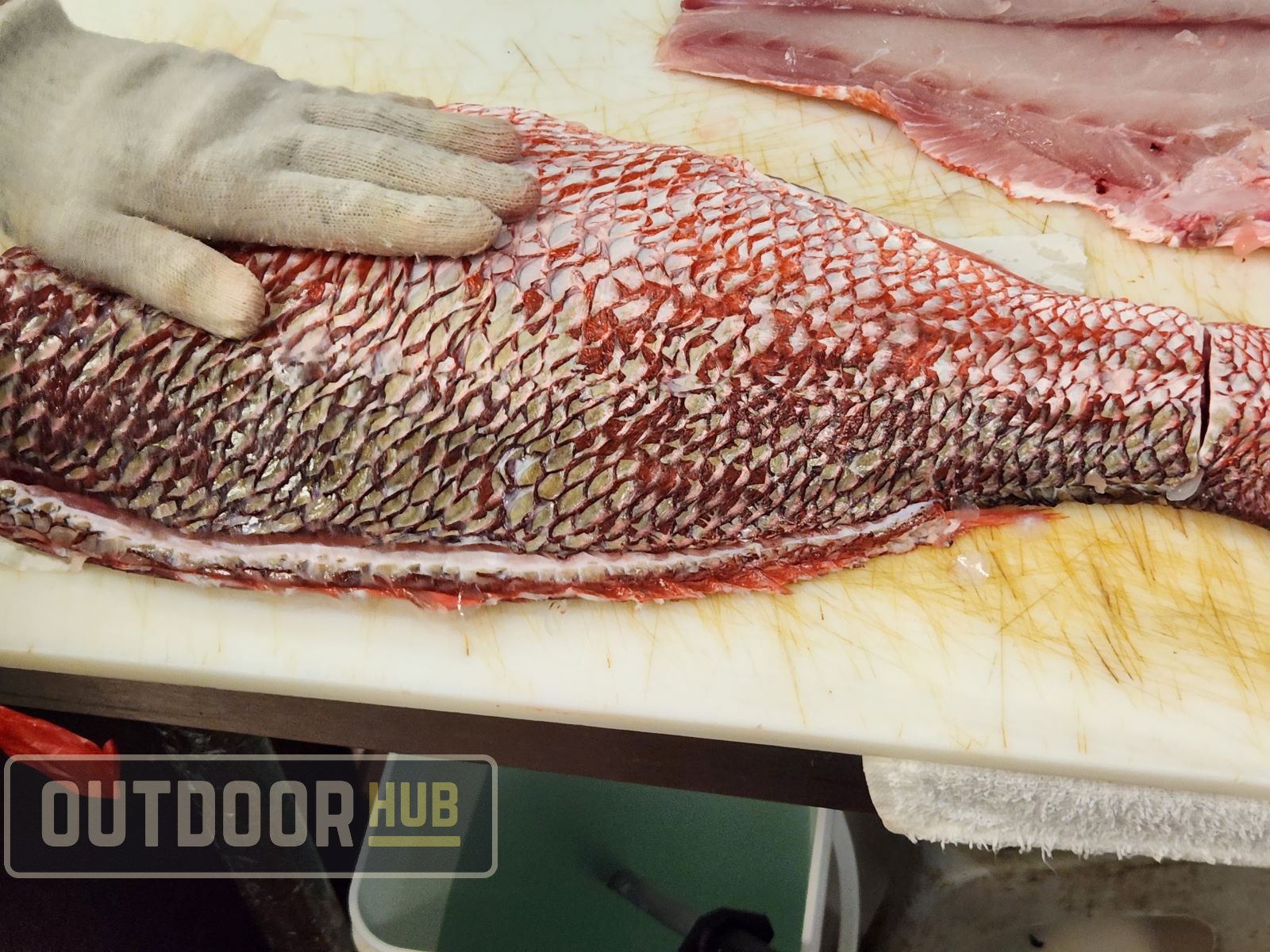
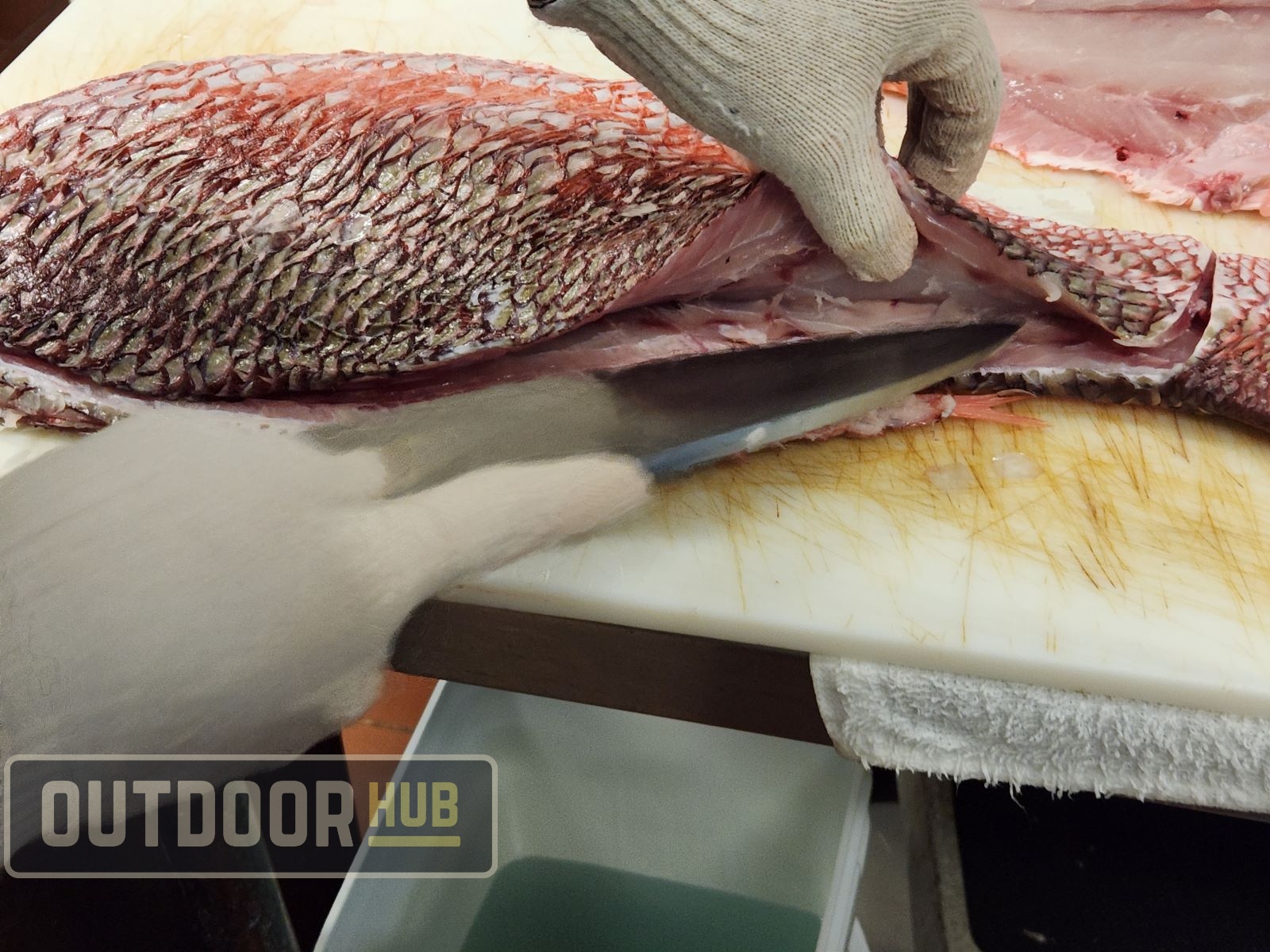
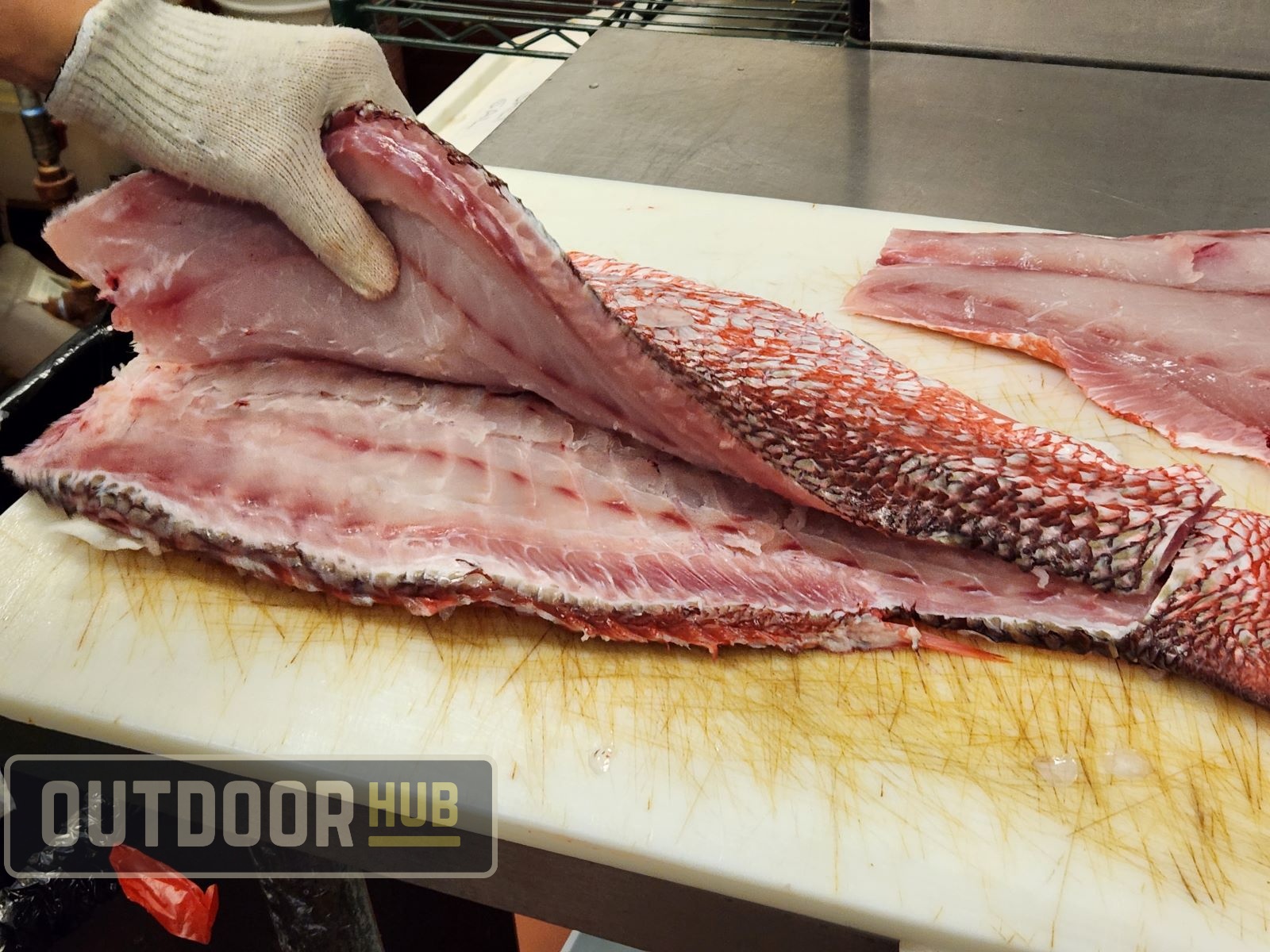
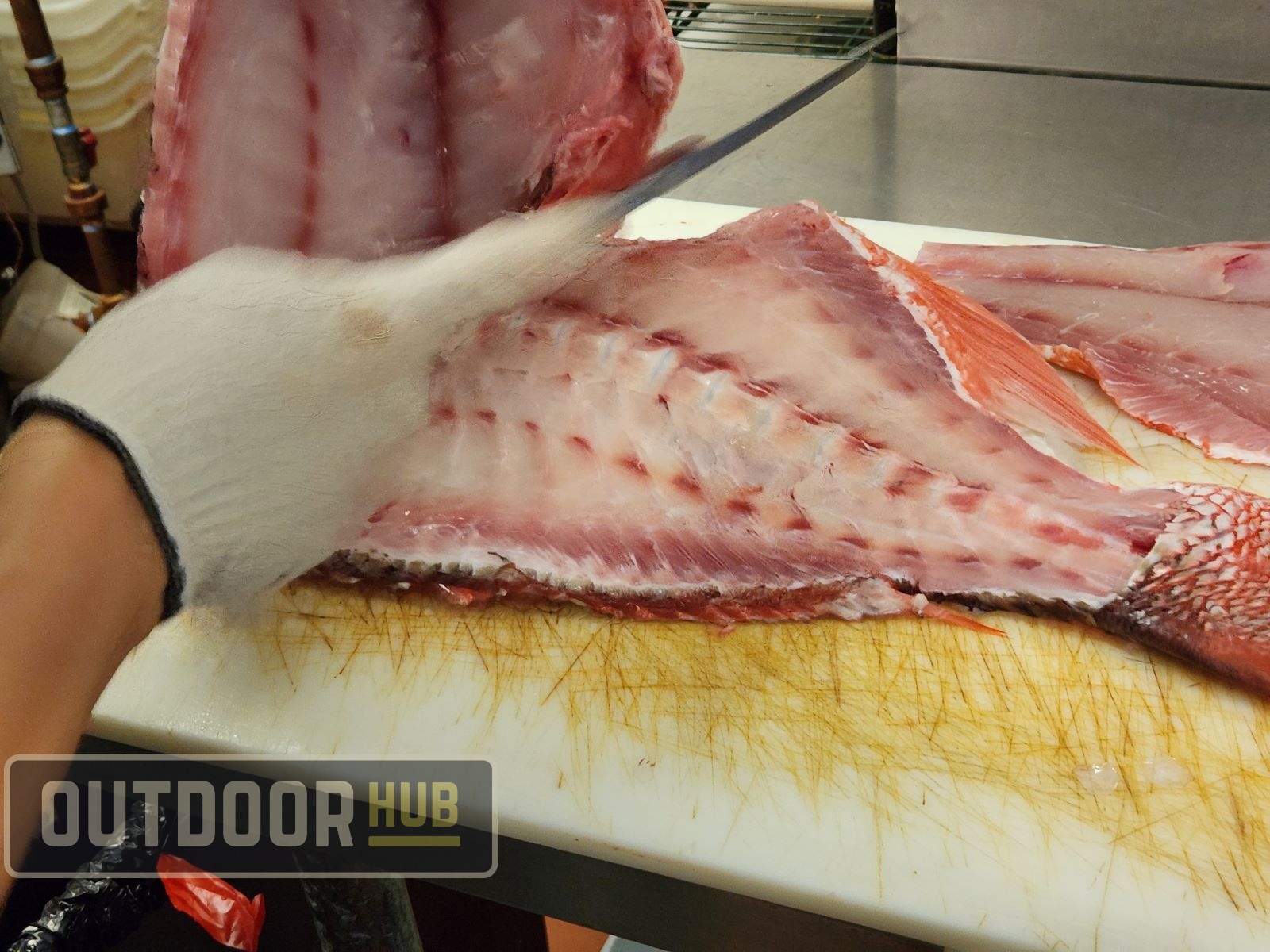
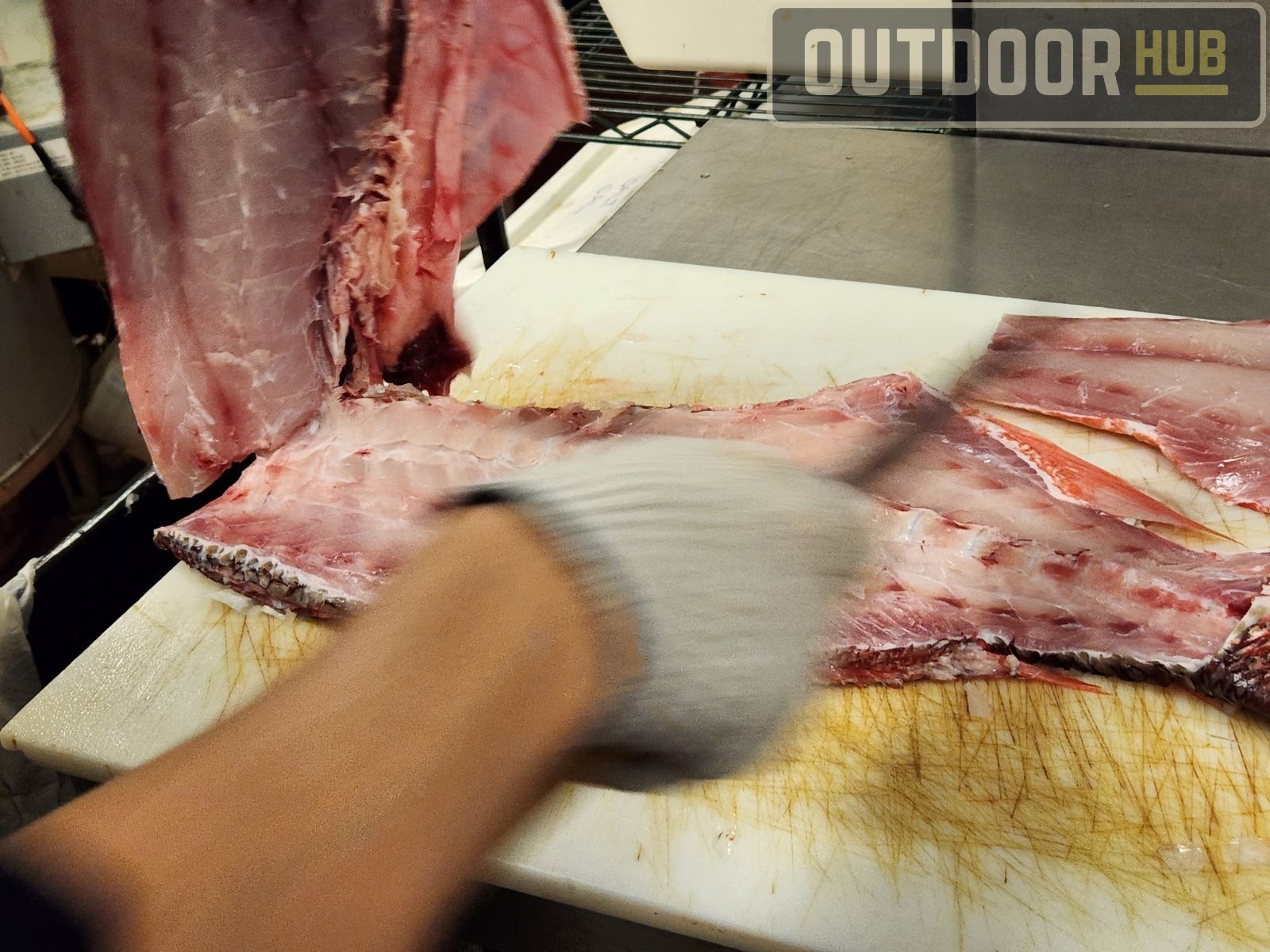
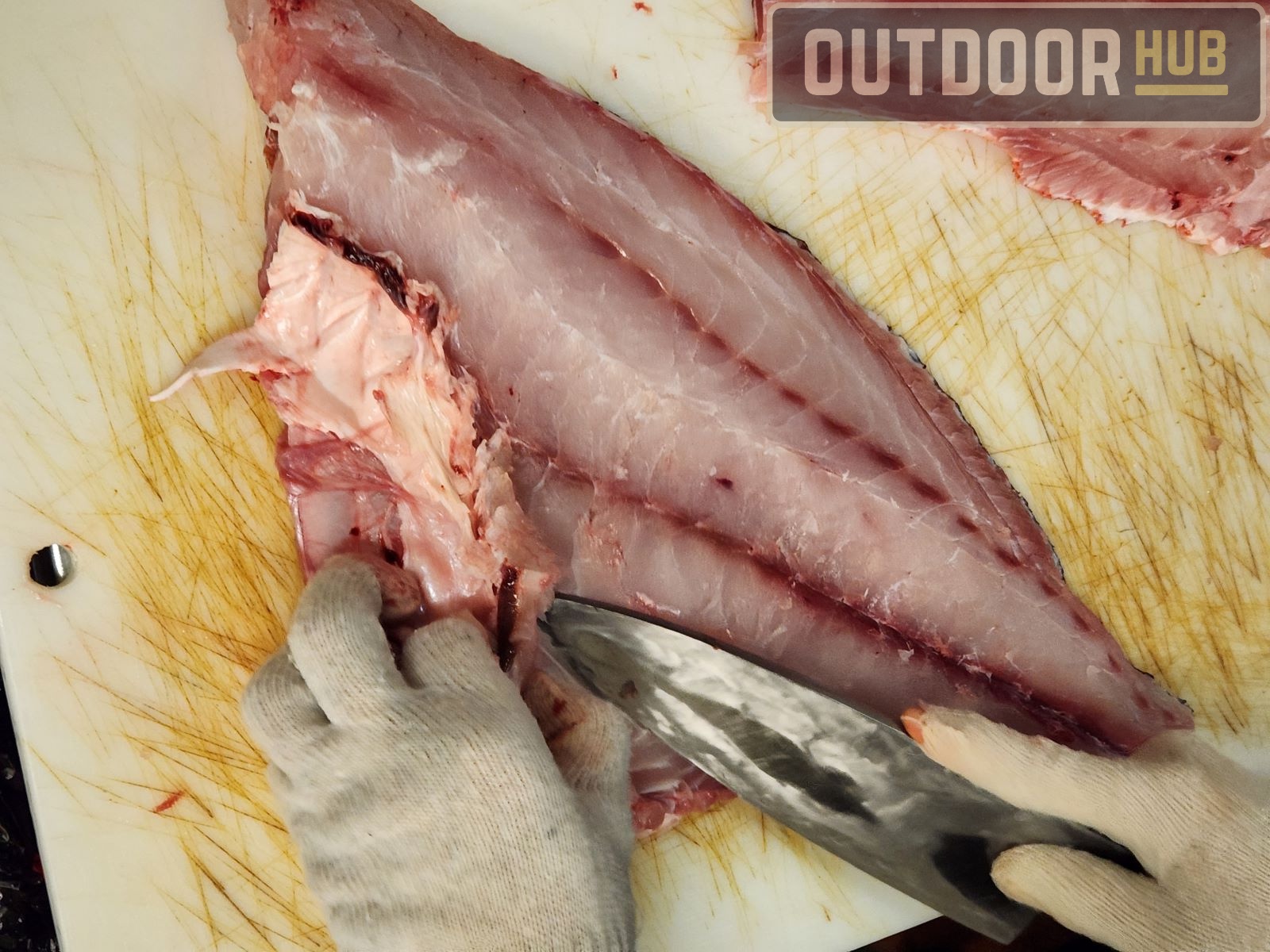
Breaking It Down: Filleting a Red Snapper
Now you have just the red snapper fillets, you can start trimming off the rib cage from the fillet. Carefully follow along the curve of the rib bones making smooth cuts. Once the rib cage is removed, do a little trimming and now you have an almost boneless fillet.
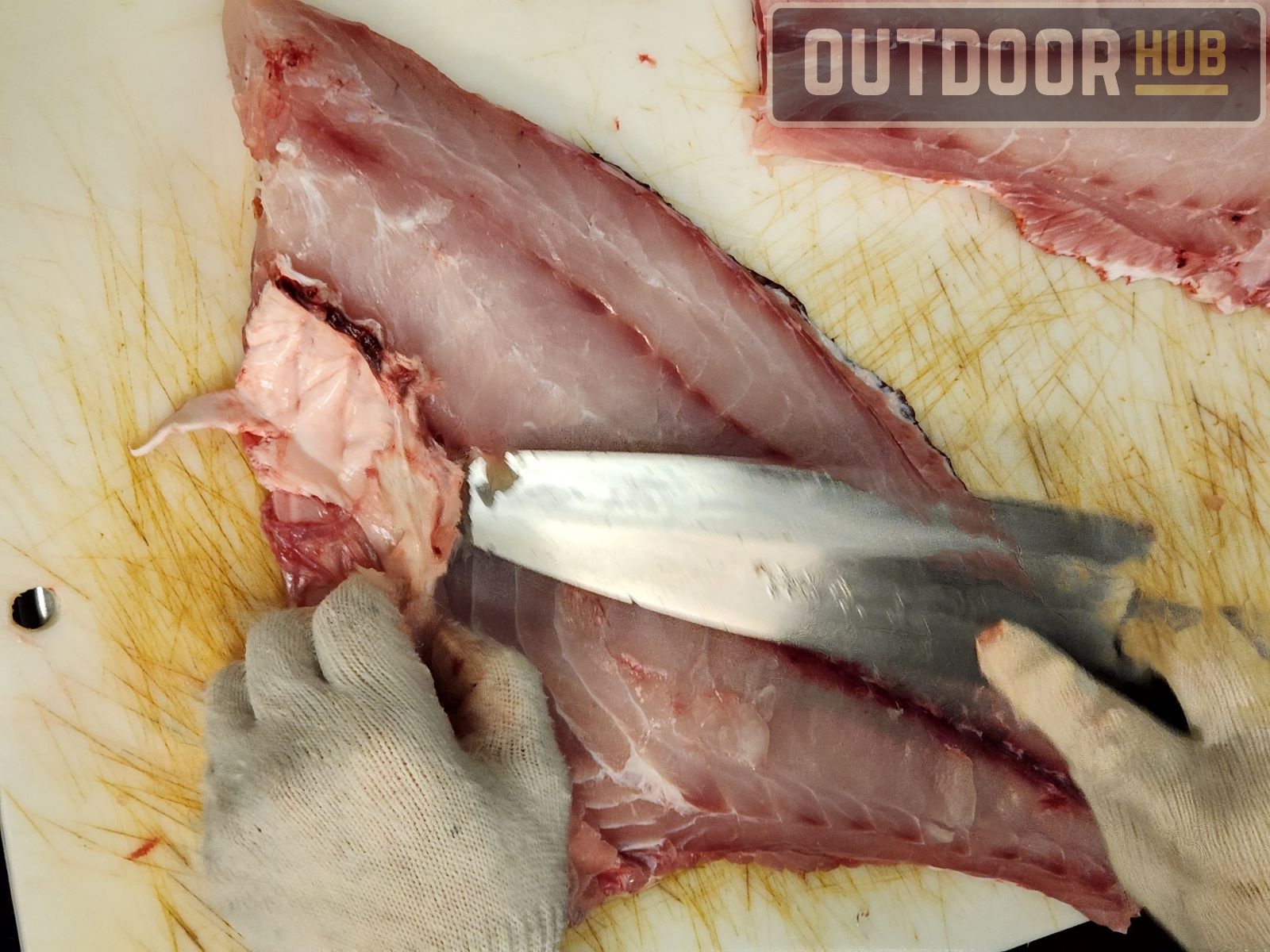
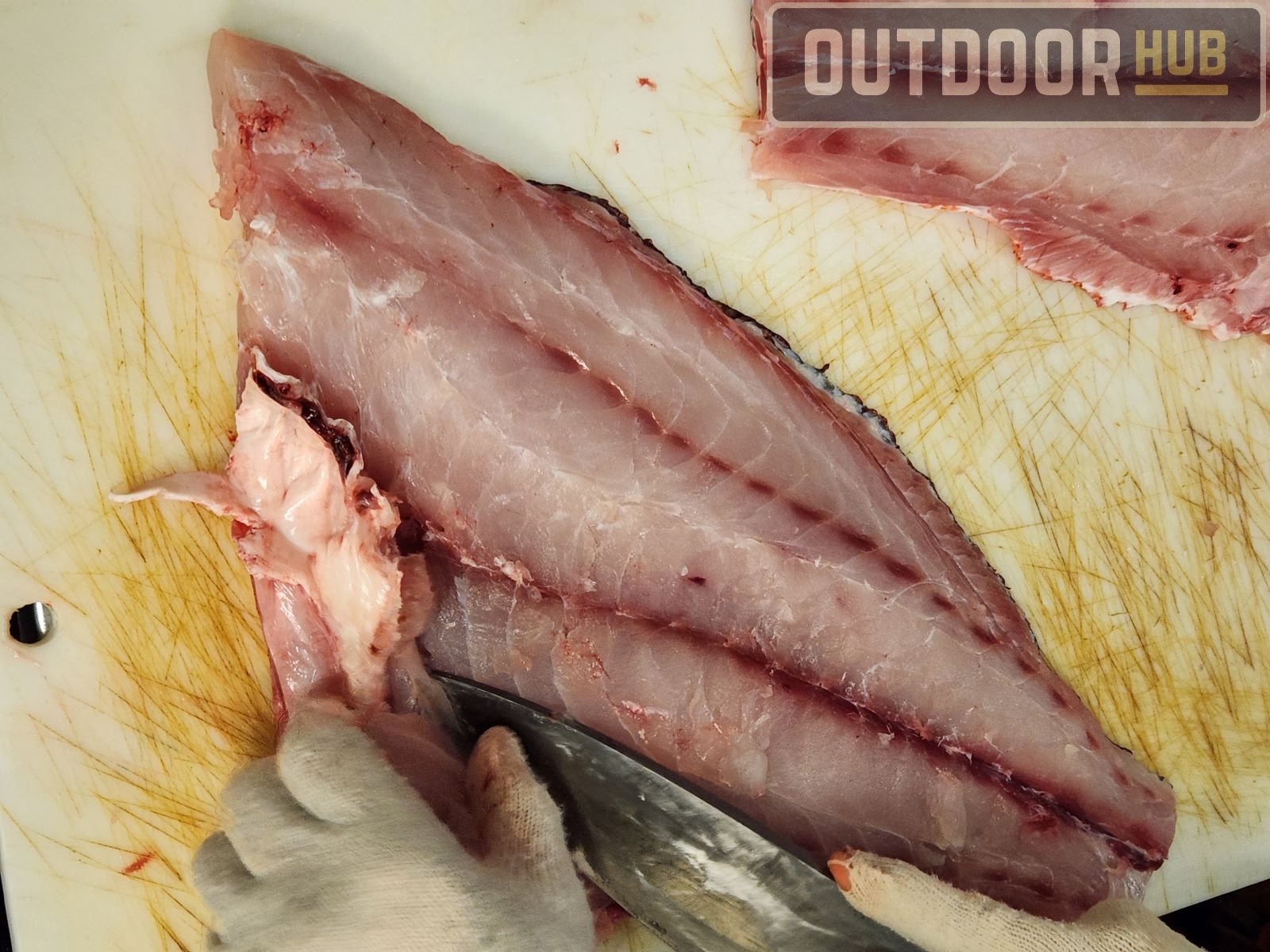
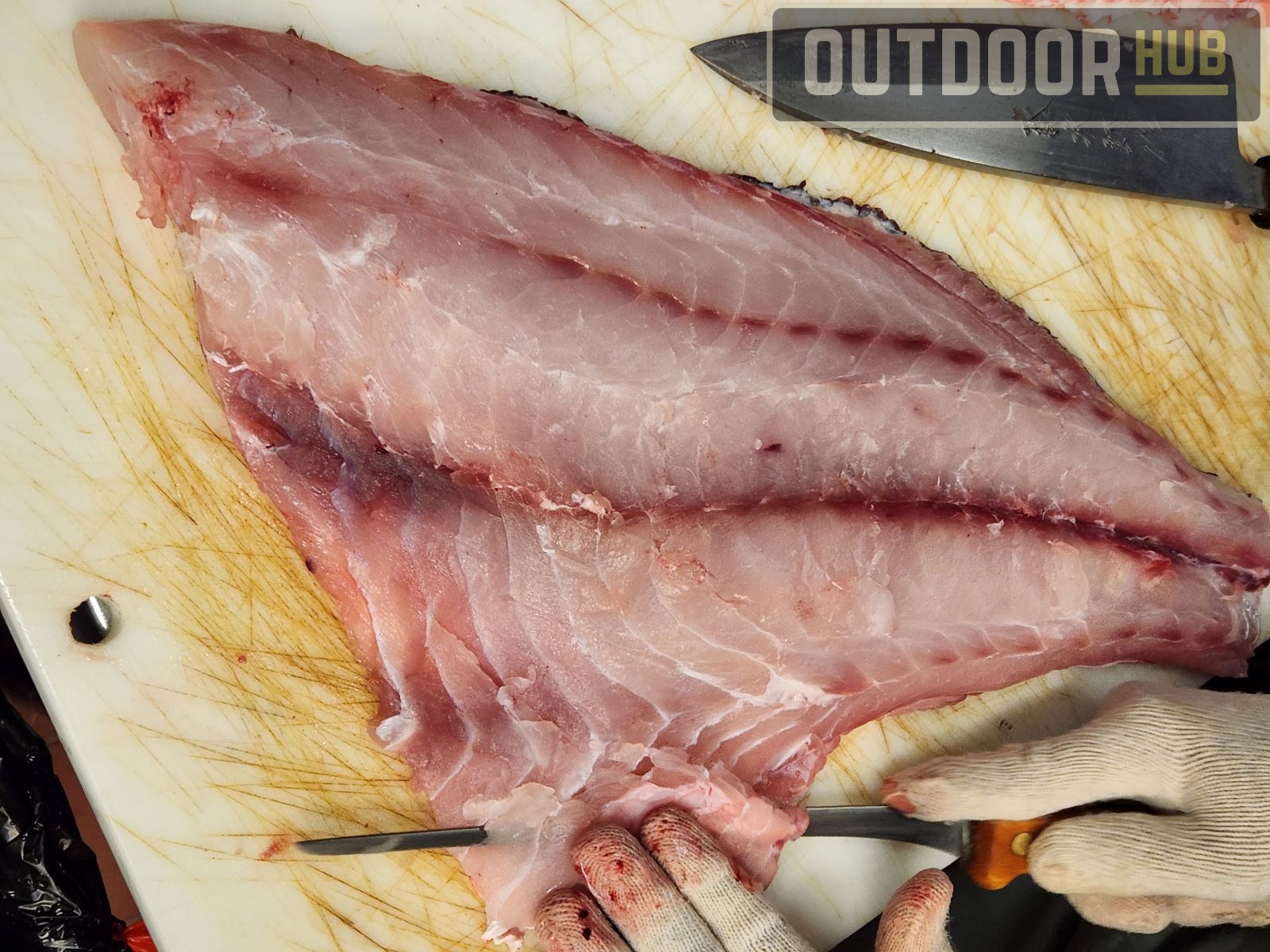
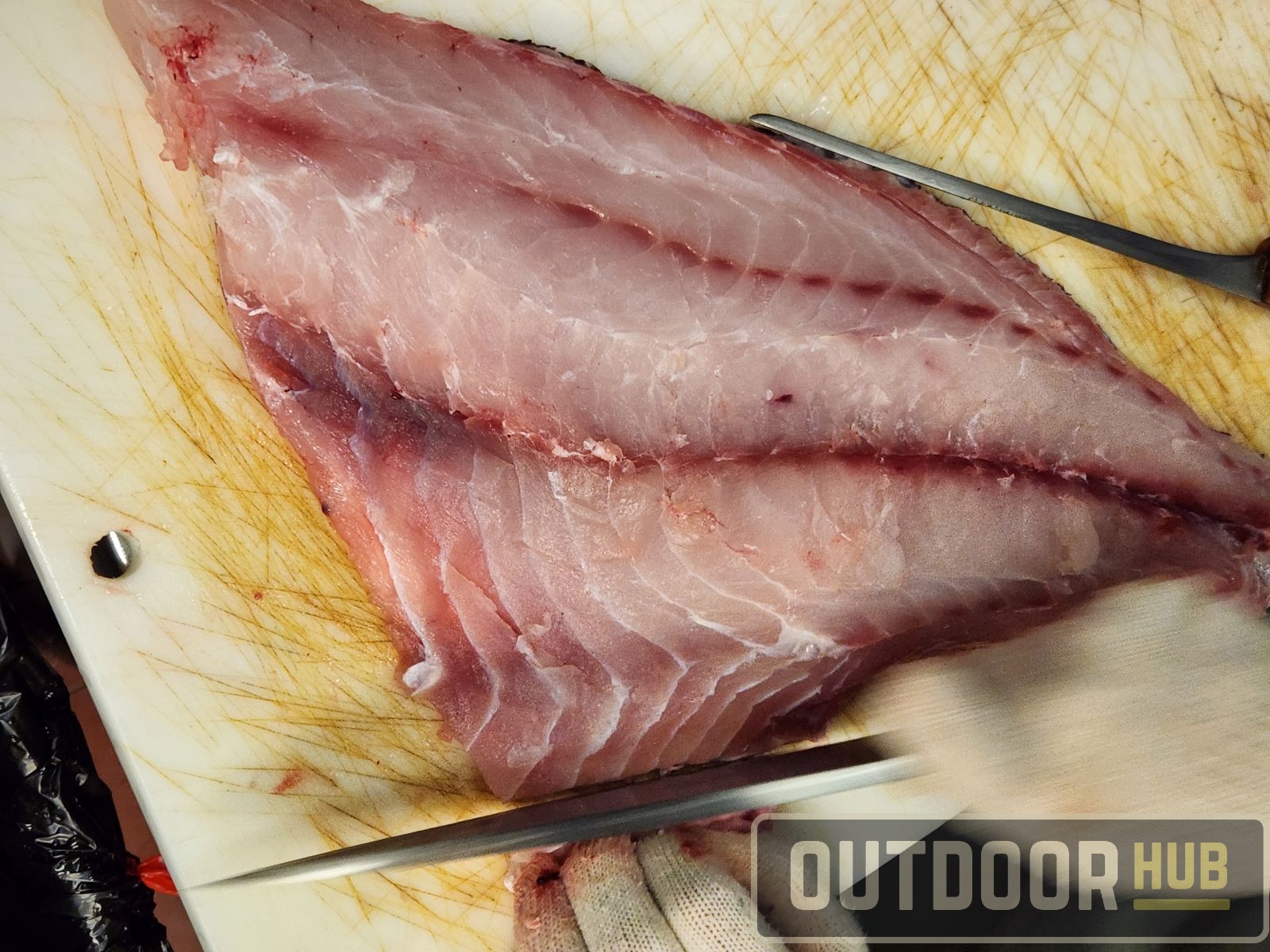
At this stage you can take the skin off the fillets with what most people call a fillet knife, but they’re best used for just skinning the fillets. I recommend not scaling a fish if you want to remove the skin, the scales make it easier to skin, they act as a sort of backing to the skin and keeps the knife from pushing through the skin as easily. Keep the skinning knife as flat as possible to the cutting board, with a slight angle down. You want to slightly pull back on the skin as you are pushing the knife forward in one smooth motion.

Now with a fillet this big, you want to split it into two pieces along the midline of the fillet for better portion sizes. While splitting the fillet we also cut out the pin bones, the last bones left in the fillet.
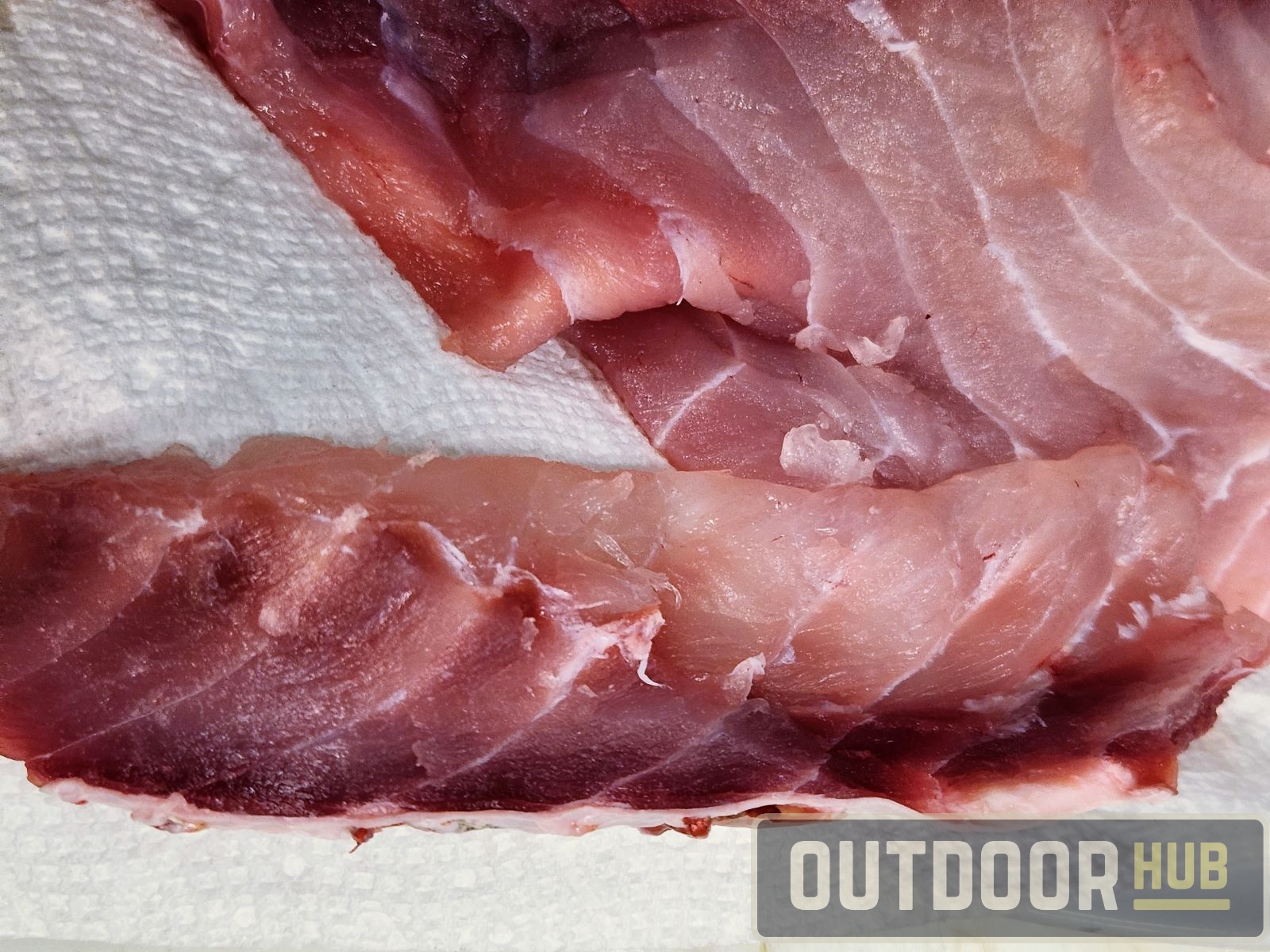
Then you can cut up the boneless fillet into equal portions that you can cook up immediately or wrap up and freeze for later.

